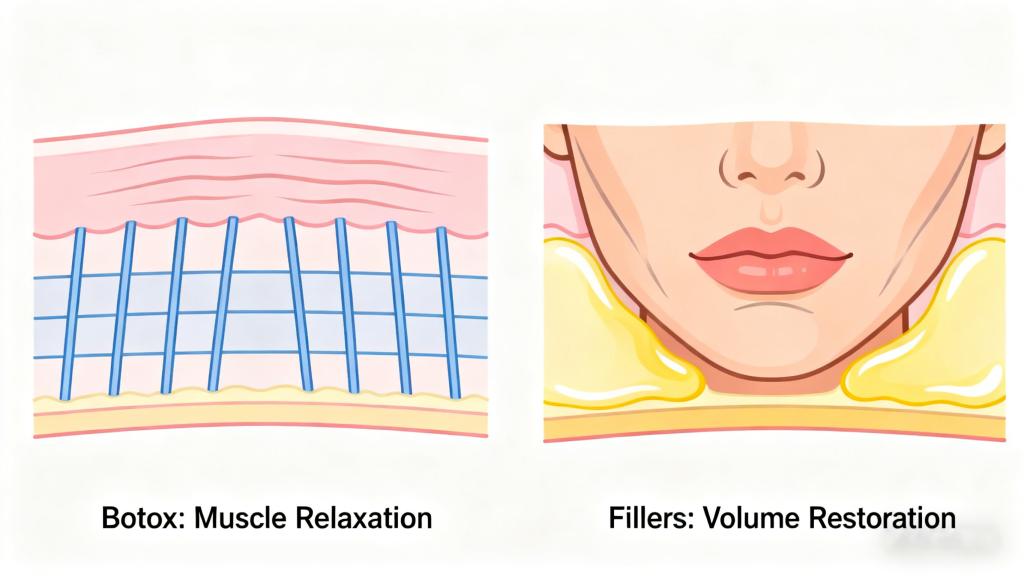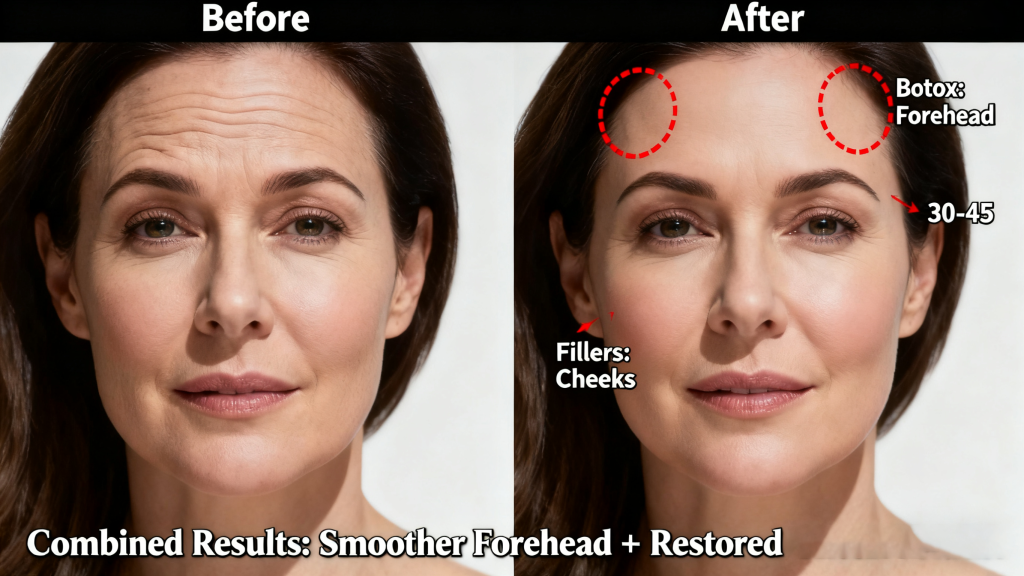Don't miss our holiday offer - up to 20% OFF!
Botox vs. Fillers: Which One Is Right for Your Skin Concerns?
When it comes to non-surgical anti-aging treatments, Botox and fillers are two of the most popular options—but they’re not interchangeable. Each addresses specific skin concerns, and choosing the right one depends on what you want to achieve. Do you want to smooth dynamic wrinkles (like crow’s feet)? Or restore volume to sunken cheeks? Let’s compare Botox and fillers, so you can make an informed decision.
The Core Difference: How Botox and Fillers Work
At their core, Botox and fillers target aging in entirely different ways:
- Botox: A neurotoxin derived from Clostridium botulinum, Botox works by temporarily relaxing the muscles that cause dynamic wrinkles—those lines that form when you smile, frown, or squint (think crow’s feet around the eyes or forehead lines). By relaxing these muscles, Botox prevents wrinkles from deepening and softens existing ones.
- Fillers: As we covered in our previous blog, dermal fillers are gel-like substances that add volume beneath the skin. They target static wrinkles (lines that are visible even when your face is at rest) and areas where volume has been lost, like cheeks, lips, or under the eyes.

Which Concerns Do They Treat?
To choose between Botox and fillers, start by identifying your main skin concern:
| Botox Is Best For | Fillers Are Best For |
|---|---|
| Crow’s feet (eye wrinkles) | Thin lips (adding fullness) |
| Forehead lines | Sunken cheeks (restoring volume) |
| Frown lines (between the brows) | Nasolabial folds (smile lines) |
| Bunny lines (on the nose) | Under-eye hollows |
| Jawline tension (for a slimmer look) | Jowls (defining the jawline) |
Pro Tip: Many people combine Botox and fillers for a “full-face refresh.” For example, Botox can smooth forehead lines, while fillers restore cheek volume—creating a cohesive, youthful appearance.

What to Expect: Treatment Time, Downtime, and Results
Both Botox and fillers are quick, minimally invasive treatments, but there are differences in recovery and longevity:
- Botox: Sessions take 10–20 minutes. Results appear 2–7 days after treatment and last 3–4 months. Downtime is minimal—you may notice slight redness at injection sites, but it fades quickly.
- Fillers: Sessions take 30–60 minutes (depending on the number of areas treated). Results are visible immediately, though mild swelling or bruising may last 1–3 days. HA fillers last 6–12 months, while collagen-stimulating fillers last 2+ years.
How to Choose: Talk to Your Provider
The best way to decide between Botox and fillers is to consult a board-certified cosmetic provider. They’ll assess your facial structure, discuss your goals, and recommend a treatment plan—whether that’s Botox alone, fillers alone, or a combination of both.
Don’t let the confusion between Botox and fillers hold you back from achieving the look you want. With the right treatment, you can smooth wrinkles, restore volume, and feel confident in your skin.
